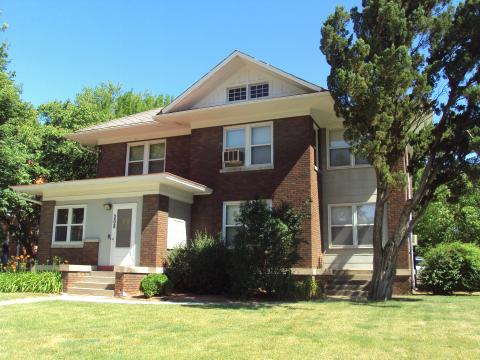In the summer of 1971, the University of Iowa Latino-Native American Cultural Center was created by students looking for a place to be themselves on campus. Now, 45 years later, their achievement, and what some call bravery, is celebrated.
A rededication and ribbon-cutting ceremony for the center will take place today from 5 to 6 p.m. Members of the community, university officials, and alumni are expected to attend.
Tony Zavala, Ruth Pushetonequa, and Nancy “Rusty” Barceló founded the center. Barceló, who is the current president of Northern New Mexico College, will attend the celebration.
Rachel Garza Carreón, the center’s librarian liaison, said the three students who founded the center have long intrigued her.
“That has always been amazing to me; you saw a need and you had no reason to go through it,” she said. “You could have easily put your head down because that’s a lot, you’re talking about three people in a group who just said, ‘No, this isn’t right. I don’t want this for myself.’ ”
Carreón said the center is not meant to perpetuate exclusivity but to offer a home and voice to those who need one.
“I want people to understand that it’s not just a physical building, it stands for something,” she said. “It’s symbolic. And that’s really why we care, because it’s history, to us, it is a landmark.”
Originally, the house was located at 115 N. Clinton St., but it moved to its present location, 308 Melrose Ave., in 1973. In preparation for what officials estimate could be more than 100 guests, the center has put up new blinds, a fresh layer of paint, and newly stemmed sofas.
Peggy Valdes, the center’s graduate assistant manager, said preparations for the celebration have been brewing since last semester. It is Valdes’ last year as the house’s manager.
“It’s very bittersweet for me to prepare this anniversary celebration,” she said. “I love this place, and I love the students here, so I’m happy to do it, but it’s also kind of like a parting gift.”
Valdes, a doctoral student in higher education and student affairs, said the center provides a place in which students can feel and gain a sense of belonging, which can help with retention.
“A house like this helps students feel like they belong here and enables them to start dreaming about their futures,” she said.
Valdes noted that the undergraduate students she oversees have been a source of support for her.
“People told me that for students of color, that Ph.D. is very isolating because we’re so underrepresented,” she said. “I never really thought about that until I got here and realized, you know, I’m the only Latina in my whole program.”
Thom Johnson, the co-president of the Native American Student Association, said the center is “the one place on campus that brings us all together.”
“The center has been my on-campus home for all four years of my involvement with the association; I have spent virtually every Thursday night there since I first joined the group,” he said.
Besides the association, the center is shared among the Association of Latinos Moving Ahead, Sigma Lambda Gamma, Sigma Lambda Beta, and Lambda Theta Nu.
Brian Leal, the president of Latinos Moving Ahead, expressed a similar sentiment; he comes from a Texas community that is 97 percent Latino.
“The cultural center represented somewhere, a safe space where folks who looked like me, who shared that culture — I could be around them and speak Spanish, cook posole, which is a Mexican dish,” he said.
Leal said he believes the center allows Latino students to learn more about themselves and the cultures of their ancestors, which some may or may not share depending on the community they come from.
“One of the things that makes the United States so beautiful is that you have a whole bunch of cultures, a whole bunch of individuals from different countries that brought a piece of that to the United States, and I think that is a living representation of what this is,” he said.



